Original Source: https://www.smashingmagazine.com/2020/06/encouraging-clicks-book-release/
Click! Here: Meet Our New Smashing Book
Click! Here: Meet Our New Smashing Book
Vitaly Friedman
2020-06-02T12:00:00+00:00
2020-06-02T19:36:16+00:00
You’ve been there before, haven’t you? Perhaps your manager insists on using a dark pattern to trick customers into buying. Or an A/B test has just shown that an annoying pop-up does increase sign-ups. Or maybe you always end up firefighting negative reviews and angry customer inquiries and your calls to action don’t perform well.
Whether we are designers, marketers, entrepreneurs, or product owners, we are all in the same boat. We want to give users a good experience, but we also need them to take action. More often than not, these things are considered to be mutually exclusive, but they don’t have to be.
That’s why we’ve teamed up with Paul Boag to work on Click! How To Encourage Clicks Without Shady Tricks, a detailed guide on how to increase conversion and boost business KPIs without alienating customers along the way. A book that shows how to increase clicks, build trust, loyalty and drive leads while keeping users respected and happy at the same time. Jump to table of contents and download a free PDF excerpt (17.3 MB).
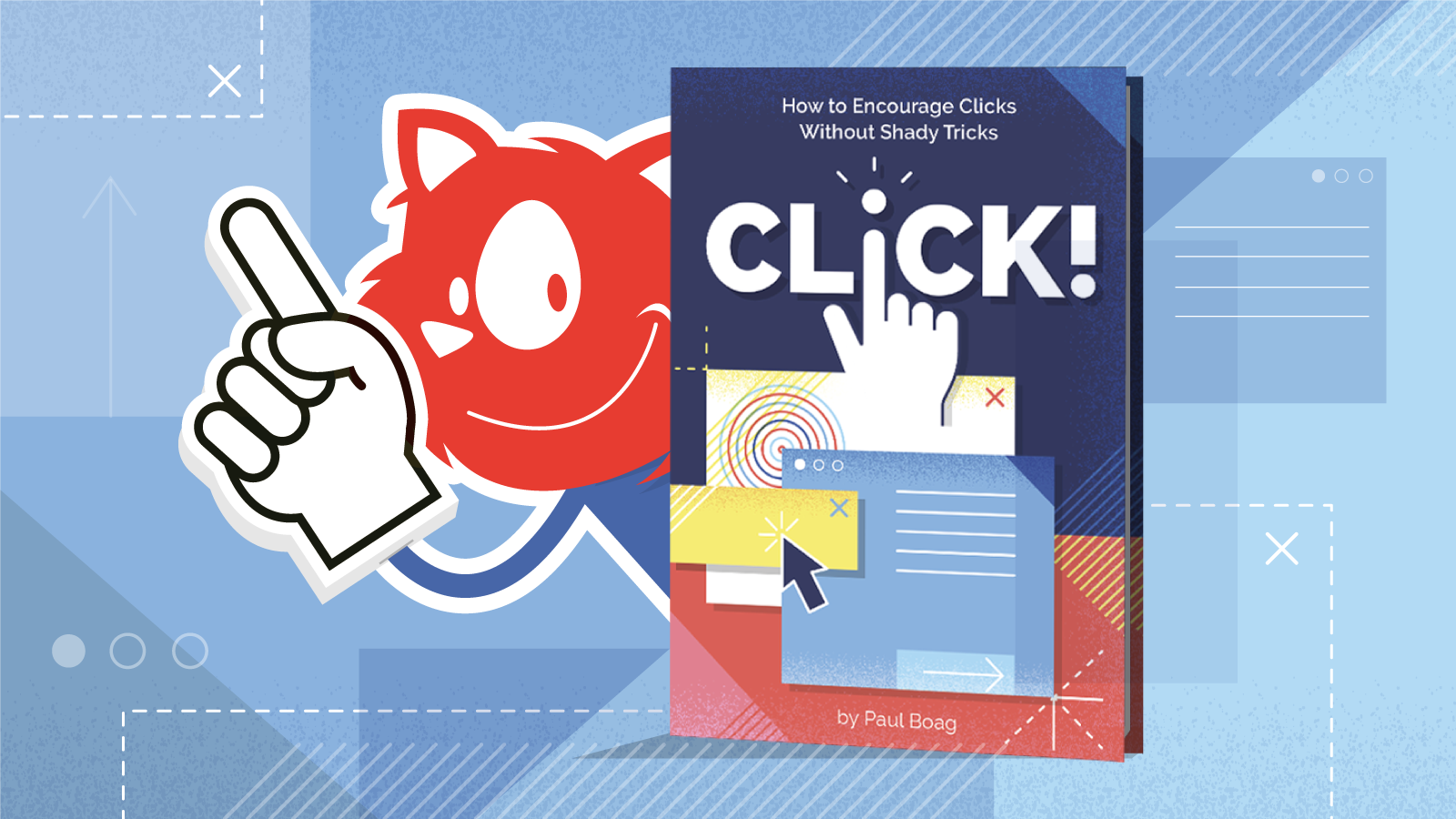
Print + eBook
eBook
Print + eBook
{
“sku”: “click”,
“type”: “Book”,
“price”: “39.00”,
“prices”: [{
“amount”: “39.00”,
“currency”: “USD”,
“items”: [
{“amount”: “29.00”, “type”: “Book”},
{“amount”: “10.00”, “type”: “E-Book”}
]
}, {
“amount”: “39.00”,
“currency”: “EUR”,
“items”: [
{“amount”: “29.00”, “type”: “Book”},
{“amount”: “10.00”, “type”: “E-Book”}
]
}
]
}
$
39.00
Get Print + eBook
Quality hardcover. Free worldwide shipping. 100 days money-back-guarantee.
eBook
{
“sku”: “click”,
“type”: “E-Book”,
“price”: “19.00”,
“prices”: [{
“amount”: “19.00”,
“currency”: “USD”
}, {
“amount”: “19.00”,
“currency”: “EUR”
}
]
}
$
19.00
Free!
Get the eBook
DRM-free, of course.
ePUB, Kindle, PDF.
Included with Smashing Membership.
Get the eBook
Download PDF, ePUB, Kindle.
Thanks for being smashing! ❤️
About The Book
There is no shortage of books on marketing and user experience. But when it comes to bridging the gap between the two, many of us struggle to find the right balance. As businesses, we need to meet out targets — be it with install app prompts, newsletter overlays, or infamous chat widgets. But as designers, we don’t want to end up with a frustrating user experience. We really need both, and we need a strategy to get there.

That’s why we’ve written Click! — a guide with practical strategies for improving conversion and retention while building user’s loyalty and trust. The book explores how to effectively address user concerns, overcome skepticism, and encourage users to act — helping you meet your business targets and KPIs along the way. Whether you are a designer, marketer, entrepreneur or product owner, this book will surely help you avoid hidden costs and drive sales.
Here’s a short video message from Paul Boag, the author of Click!, explaining why he’s written the book and what it’s all about:
By reading this book, you will learn to:
Measure and boost business KPIs effectively,
Build a user-centric sales funnel,
Reduce risks and address objections,
Build trust and overcome skepticism,
Persuade people without alienating them,
Establish a strategy for higher conversion.
Psst! A little surprise shipped with the first 500 books.
Download a free PDF sample (17.3 MB) and get the book right away.
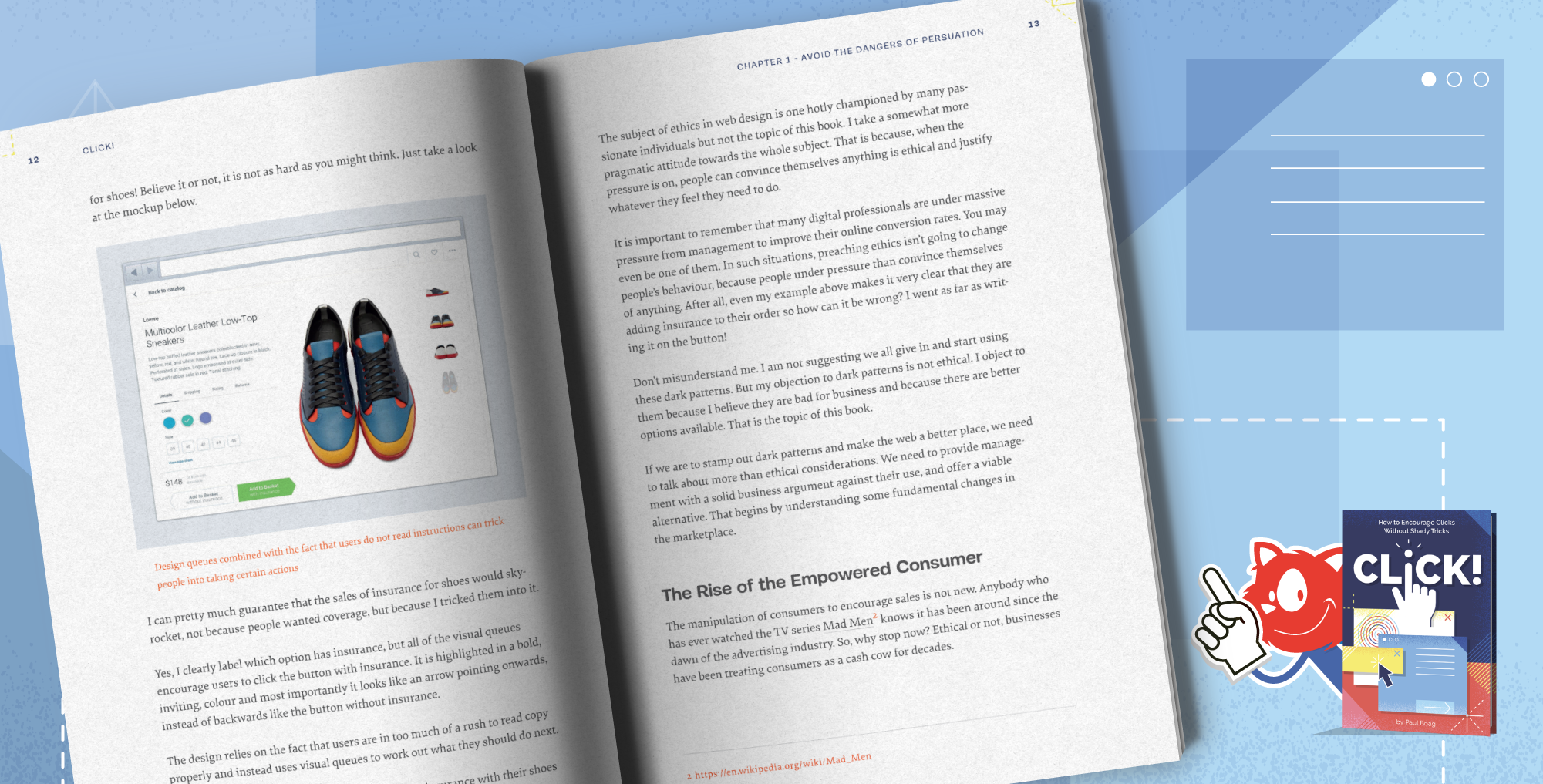
The book features interface design examples that take ethical design principles into account. Large preview.
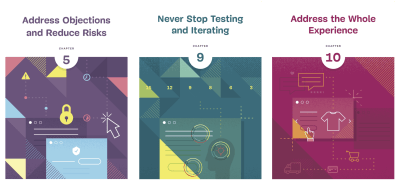
The cover and chapter illustrations carefully designed by Veerle Pieters.
Table Of Contents
The book is split into 11 chapters. We’ll start by exploring the psychology of decision making and how to measure conversion. Then we’ll build a user-centric sales funnel and address user concerns effectively. Finally, we’ll explore how to encourage users to act without alienating them.
1. Avoid the Dangers of Persuasion
+
Paul begins your journey with a rock-solid business case you can take to management or clients to avoid the more manipulative techniques you see online.
You will learn:
How online choice has empowered the consumer.The hidden marketing costs of manipulation.The dangers of buyers remorse.
2. Measure Conversion Effectively
+
You cannot improve what you are not measuring. That is why, in Paul’s second chapter, he explores how to measure your conversion rate effectively. Only then can you start to improve it.
You will learn:
The dangers of having no metrics or bad ones.How to establish your key performance indicators.What to track and how to track it.
3. Get to Know Your Users
+
If you want to persuade people to act, you need to understand how they think and what they want. To do that you need to carry out at least some user research. In this chapter, Paul introduces you to easy to use techniques that will get the job done with the minimum of investment.
You will learn:
What exactly you need to understand about your audience.How to consolidate all you know about your users.How to carry out lightweight user research.
4. Build a User-Centric Sales Funnel
+
The decision to act doesn’t take place in isolation and is part of the broader user journey. In this chapter, Paul explains how to understand that journey and build a sales funnel that supports the user’s experience, rather than seeking to interrupt it.
You will learn:
What a sales funnel is and how it helps.How to map your customer’s journey.How to build a sales funnel around the user’s journey.
5. Address Objections and Reduce Risks
+
This chapter explores one of the most important aspects of encouraging users to act — addressing their concerns. We’ll see how to identify user’s objections and then overcome them, so reducing the risk of taking action in the minds of users.
You will learn:
How to identify the concerns your audience has about taking action.How to address common concerns.A process for handling any objection users might have.
6. Establish Trust and Overcome Scepticism
+
People will not hand over money or personal information if they do not trust you. To make matters worse users have learned to be sceptical online. In this chapter, you will learn how to build a connection with your audience and help them learn to trust you.
You will learn:
Why trust is essential for improving conversion.
How to build trust through openness and empathy.
The role of social proof and connecting consumers in building trust.
7. Defeat Cognitive Overload
+
In this chapter, you will discover how to reach an audience that is distracted and time-poor. You will learn the importance of not making users think and learn valuable techniques for making acting with you an effortless experience.
You will learn:
What cognitive load is and why it is so dangerous for your conversion rate.Methods for reducing the cognitive load of your websites.Techniques for keeping any interface simple.
8. Overcoming the Problem With Perception
+
Are your users taking away the right message from your website? Do they understand what you offer or that it is relevant to them? It is easy to leave a website without acting because you had the wrong impression. This chapter shows you how to address this genuine danger.
You will learn:
How to position our products and services in a positive light.The role that mental models play in conversion.Techniques for ensuring your content reflects the user’s mindset.
9. Never Stop Testing and Iterating
+
While Click! is packed with great tips and techniques, the real key to success is a programme of ongoing testing and iteration. In this chapter, Paul shows you how to put in place a methodology that will keep your conversion rate growing for years to come.
You will learn:
Techniques for ensuring you are working on the right projects to improve conversion.Ways to test how compelling a design concept is.How to integrate testing into every aspect of your development cycle.
10. Address the Whole Experience
+
While marketers and UX designers have an enormous impact on conversion, they are only a part of the story. That is why in this chapter, we explore how to address the whole user experience and start encouraging colleagues to help improve the conversion rate too.
You will learn:
The role of your developer in improving your conversion rate.How to use other digital channels to improve your website conversion rate.How broader organisational changes can help boost revenue and online leads.
11. Where to Go From Here
+
With a book packed with advice, it can be overwhelming. The book concludes with some practical next steps that you can take, wherever you are on your journey to improve conversion.
You will learn:
Quick wins that can get you started today.Budget testing techniques you can implement immediately.A more ambitious and ongoing approach to optimisation.
 “This is a great book on how to practically, and ethically, optimise website conversion rates. Before, I was roughly aware of what CRO was, but now I feel confident to start implementing these techniques in projects. As you would expect, Paul explains all of the concepts in an easy-to-follow and friendly manner.”
“This is a great book on how to practically, and ethically, optimise website conversion rates. Before, I was roughly aware of what CRO was, but now I feel confident to start implementing these techniques in projects. As you would expect, Paul explains all of the concepts in an easy-to-follow and friendly manner.”
— Dave Smyth, Agency Owner
 “I picked up a super simple testing idea, and saw a 42% lift in conversion rate. It was surprising to me, so I ran it again to significance with the same result. That equates to about 2.5 million USD/year in revenue at no additional cost. So I’d say I got my money’s worth!”
“I picked up a super simple testing idea, and saw a 42% lift in conversion rate. It was surprising to me, so I ran it again to significance with the same result. That equates to about 2.5 million USD/year in revenue at no additional cost. So I’d say I got my money’s worth!”
— Brandon Austin Kinney, Director of Lead Generation
304 pages. The eBook is available (PDF, ePUB, Amazon Kindle) and printed copies are shipping now. For designers, marketers, entrepreneurs and product owners. Written by Paul Boag. Designed by Veerle Pieters.

Print + eBook
eBook
Print + eBook
{
“sku”: “click”,
“type”: “Book”,
“price”: “39.00”,
“prices”: [{
“amount”: “39.00”,
“currency”: “USD”,
“items”: [
{“amount”: “29.00”, “type”: “Book”},
{“amount”: “10.00”, “type”: “E-Book”}
]
}, {
“amount”: “39.00”,
“currency”: “EUR”,
“items”: [
{“amount”: “29.00”, “type”: “Book”},
{“amount”: “10.00”, “type”: “E-Book”}
]
}
]
}
$
39.00
Get Print + eBook
Quality hardcover. Free worldwide shipping. 100 days money-back-guarantee.
eBook
{
“sku”: “click”,
“type”: “E-Book”,
“price”: “19.00”,
“prices”: [{
“amount”: “19.00”,
“currency”: “USD”
}, {
“amount”: “19.00”,
“currency”: “EUR”
}
]
}
$
19.00
Free!
Get the eBook
DRM-free, of course.
ePUB, Kindle, PDF.
Included with Smashing Membership.
Get the eBook
Download PDF, ePUB, Kindle.
Thanks for being smashing! ❤️
<!–
About The Author
Paul is a leader in conversion rate optimisation and user experience design thinking. He has over 25 years experience working with clients such as Doctors Without Borders and PUMA. He is the author of six books and a well respected presenter.

–>
About the Author
 Paul Boag is a leader in conversion rate optimisation and user experience design thinking. He has over 25 years experience working with clients such as Doctors Without Borders and PUMA. He is the author of six books and a well respected presenter.
Paul Boag is a leader in conversion rate optimisation and user experience design thinking. He has over 25 years experience working with clients such as Doctors Without Borders and PUMA. He is the author of six books and a well respected presenter.
Technical Details
ISBN: 978-3-945749-83-8 (print)
Quality hardcover, stitched binding, ribbon page marker.
Free worldwide airmail shipping from Germany. (Check your delivery times). Due to Covid-19 and import restrictions, there could be some delays. But you can start reading the eBook right away.
eBook is available as PDF, ePUB, and Amazon Kindle.
Get the book right away.

A quality hardcover with a bookmark. Designed with love by Veerle Pieters. Photo by Marc Thiele.

A quality hardcover with a bookmark. Designed with love by Veerle Pieters. Photo by Marc Thiele.
Community Matters ❤️
With Click!, we’ve tried to create a very focused handbook with pragmatic solutions to help everyone create a better digital product that doesn’t get abandoned due to the sheer number of pop-ups, install prompt and newsletter box overlays.
There is quite a bit of work to do on the web, but our hope is that with this book, you will be equipped with enough techniques to increase conversion and the number of happy customers.
Producing a book takes quite a bit of time, and we couldn’t pull it off without the support of our wonderful community. A huge shout-out to Smashing Members for their ongoing support in our adventures. As a result, the eBook is and always will be free for Smashing Members. Plus, Members get a friendly discount when purchasing their printed copy.
Stay smashing, and thank you for your ongoing support, everyone!
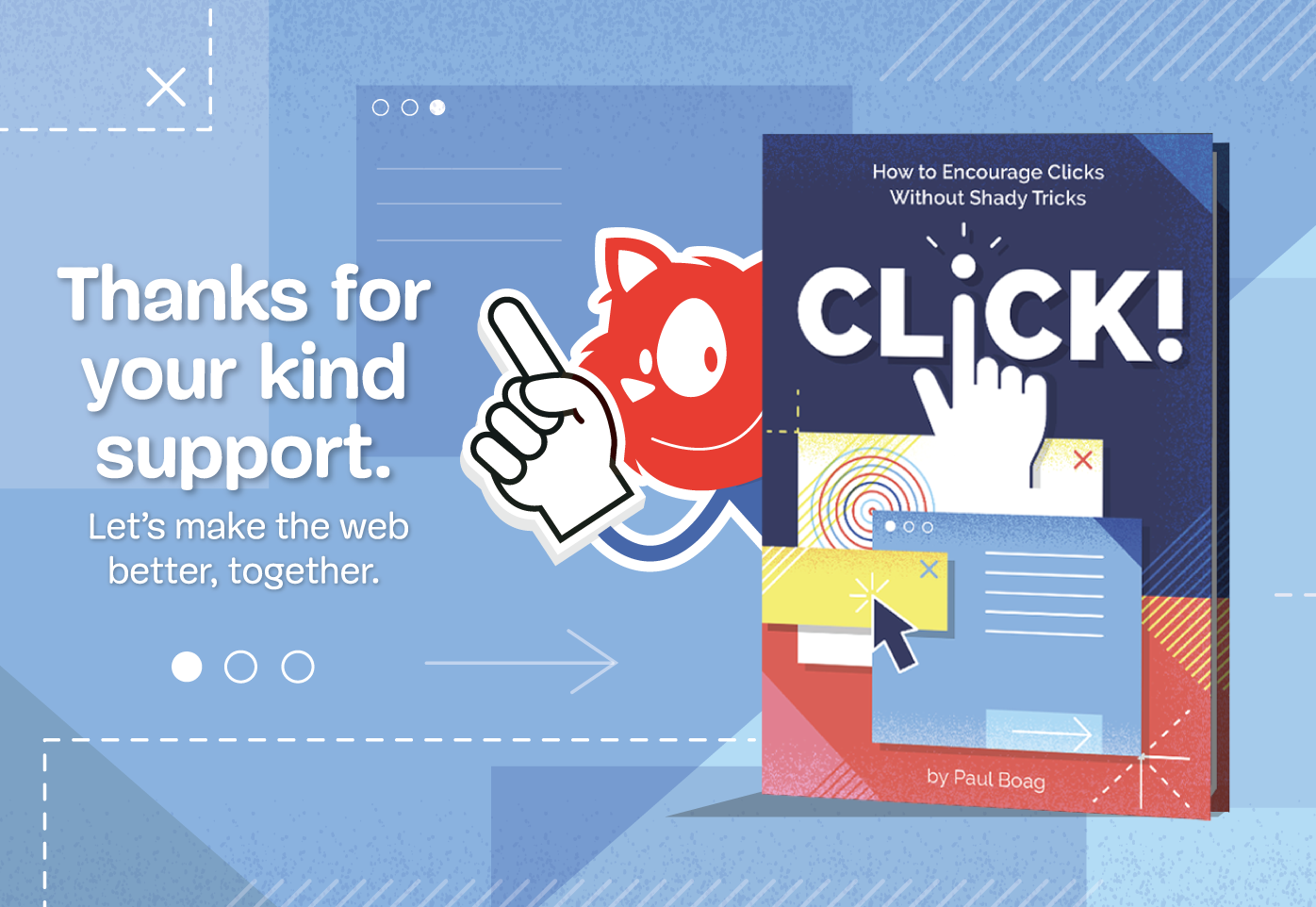
Print + eBook
eBook
Print + eBook
{
“sku”: “click”,
“type”: “Book”,
“price”: “39.00”,
“prices”: [{
“amount”: “39.00”,
“currency”: “USD”,
“items”: [
{“amount”: “29.00”, “type”: “Book”},
{“amount”: “10.00”, “type”: “E-Book”}
]
}, {
“amount”: “39.00”,
“currency”: “EUR”,
“items”: [
{“amount”: “29.00”, “type”: “Book”},
{“amount”: “10.00”, “type”: “E-Book”}
]
}
]
}
$
39.00
Get Print + eBook
Quality hardcover. Free worldwide shipping. 100 days money-back-guarantee.
eBook
{
“sku”: “click”,
“type”: “E-Book”,
“price”: “19.00”,
“prices”: [{
“amount”: “19.00”,
“currency”: “USD”
}, {
“amount”: “19.00”,
“currency”: “EUR”
}
]
}
$
19.00
Free!
Get the eBook
DRM-free, of course.
ePUB, Kindle, PDF.
Included with Smashing Membership.
Get the eBook
Download PDF, ePUB, Kindle.
Thanks for being smashing! ❤️
More Smashing Books
Promoting best practices and providing you with practical tips to master your daily coding and design challenges has always been (and will be) at the core of everything we do at Smashing.
In the past few years, we were very lucky to have worked together with some talented, caring people from the web community to publish their wealth of experience as printed books that stand the test of time. Trine, Alla and Adam are some of these people. Have you checked out their books already?
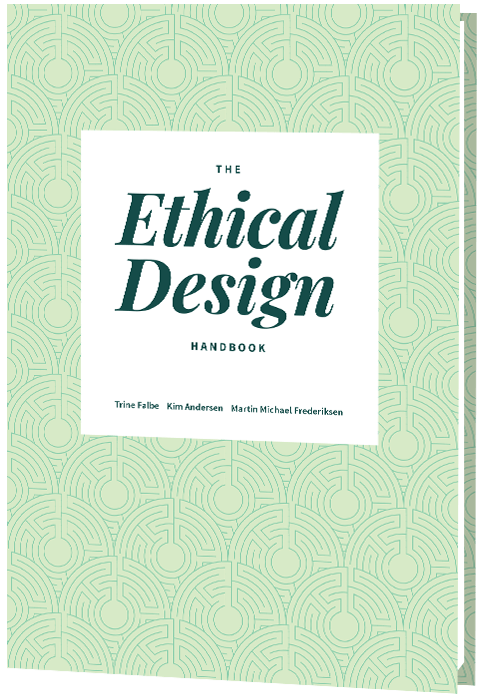 Ethical Design Handbook
Ethical Design Handbook
A practical guide on ethical design for digital products.
Add to cart $39
 Design Systems
Design Systems
A practical guide to creating design languages for digital products.
Add to cart $39
 Form Design Patterns
Form Design Patterns
A practical guide to designing and coding simple and inclusive forms.
Add to cart $39
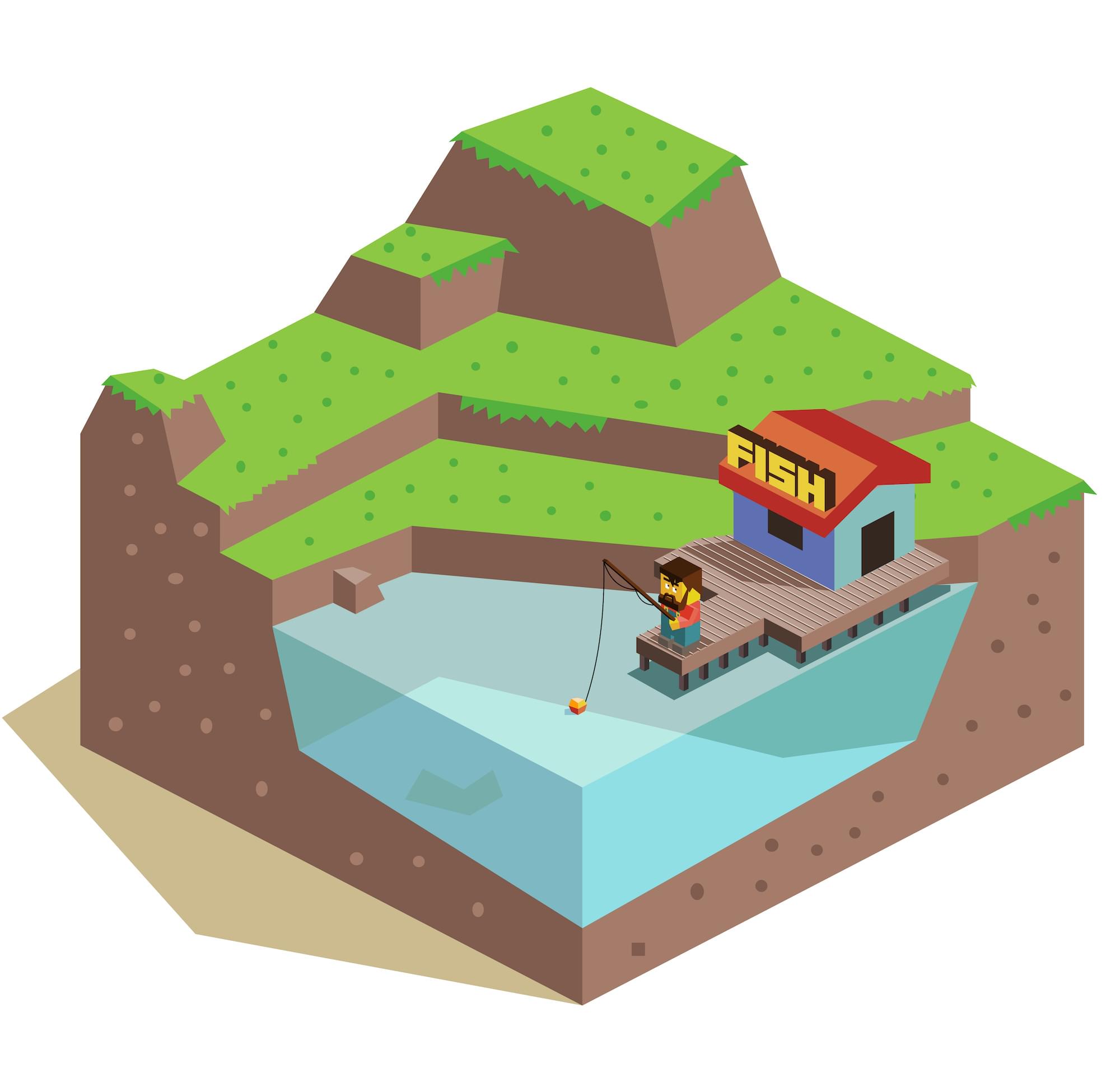





























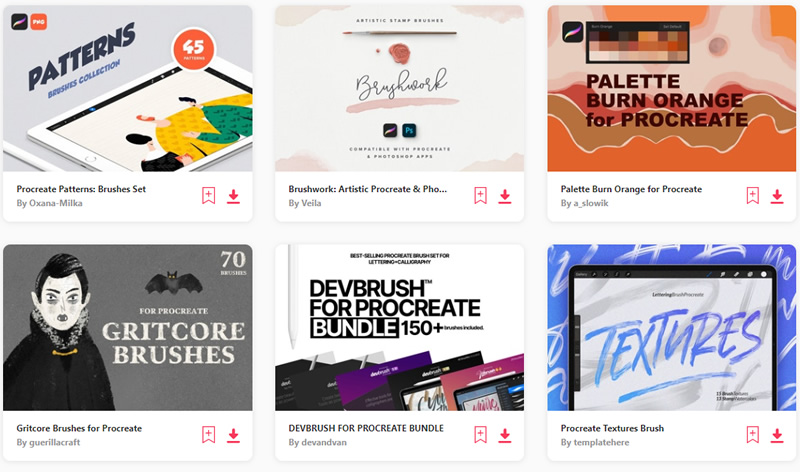










 “This is a great book on how to practically, and ethically, optimise website conversion rates. Before, I was roughly aware of what CRO was, but now I feel confident to start implementing these techniques in projects. As you would expect, Paul explains all of the concepts in an easy-to-follow and friendly manner.”
“This is a great book on how to practically, and ethically, optimise website conversion rates. Before, I was roughly aware of what CRO was, but now I feel confident to start implementing these techniques in projects. As you would expect, Paul explains all of the concepts in an easy-to-follow and friendly manner.” “I picked up a super simple testing idea, and saw a 42% lift in conversion rate. It was surprising to me, so I ran it again to significance with the same result. That equates to about 2.5 million USD/year in revenue at no additional cost. So I’d say I got my money’s worth!”
“I picked up a super simple testing idea, and saw a 42% lift in conversion rate. It was surprising to me, so I ran it again to significance with the same result. That equates to about 2.5 million USD/year in revenue at no additional cost. So I’d say I got my money’s worth!”




 Ethical Design Handbook
Ethical Design Handbook Design Systems
Design Systems Form Design Patterns
Form Design Patterns
